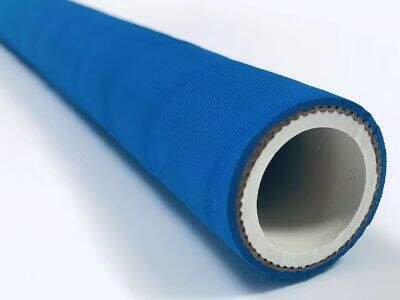Rubber hoses are invaluable in industrial operations. They help carry liquids and gases from one location to another. But not all rubber hose is equal. Finding the right one for you is essential, this we are going to look at next, how to choose the best rubber industrial hose for your job.
Understanding Your Operation's Needs:
Before you decide on the purchase of a rubber-industrial hose, make sure you first understand your operation’s requirements. Think about the types of liquids or gases you need to move and the pressure at which it must be transported as well as the temperature to which it will be sobjected. Various hoses are formulated to withstand the substances and conditions they will encounter, so you should select a hose for your application.
Things to Look for When Buying a Hose:
There are a number of questions to ask when choosing rubber industrial hose. First, consider how big the hose is, and its diameter. If the hose is too small, it may not even hold the liquid or gas, and if the hose is too large, it might be cumbersome and clumsy to keep hold of. Second, the material of the hose. Rubber hose is a tube like structure made of rubber, which is used in various applications. 27) be sure to select a hard and abrasion resistant material to prevent premature wear and attack from chemicals.
Pressure Ratings and Tempratures are Important:
Pressure One of the most critical factors in selecting a rubber industrial hose is pressure ratings and temperature limits. Various hoses are designed for a specific pressure and temperature ranges. A hose that’s not up to the task of your operation will eventually lead to leaking, bursting, or other safety problems. Ensure that the hose pressure ratings and its temperature limits are suitable enough for your unique conditions.
Compatibility with Chemicals and Abrasives:
If you are transporting chemicals or abrasives you need to select a rubber industrial hose which is appropriate for this and which has been designed for your purpose. Some hoses are designed to withstand corrosion, and some to resist (or reduce) abrasion from a variety of sources. Choosing the wrong hose could result in damage or contamination of your materials. Make sure to select a hose that is compatible with the chemicals and abrasive material in your application.
How to Take Care of Your Hose:
The rubber hose of your manufacturing plant ought to last you a very long time, provided it is properly maintained. Check the hose as often as you can for any of these symptoms of wear and tear: cracking, bulging or leaking. You should replace any cracked or leaking hoses as soon as possible to avoid accidents or contamination. When not in use, make sure to store your hoses right, coiled up or hung to keep them safe from kinks. You should also make a practise of cleaning your hoses very often to take off any residue or build up that can weaken the material.
Ultimately, selecting the correct rubber industrial hose for your project is key to working safely, effectively, and economically. By knowing what you you’re your hose to do, considering size, material, pressure rating, and temperatures, ensuring compatibility with chemicals and abrasives, and knowing basic maintenance, you can choose the right hose for your job. When it is the quality rubber industrial hoses you want, there is no better place to turn to than Eastop.

 EN
EN
 AR
AR
 BG
BG
 HR
HR
 CS
CS
 DA
DA
 NL
NL
 FR
FR
 DE
DE
 IT
IT
 PT
PT
 RO
RO
 RU
RU
 ES
ES
 TL
TL
 ID
ID
 VI
VI
 HU
HU
 TH
TH
 MS
MS
 BN
BN

